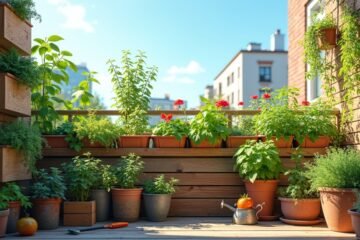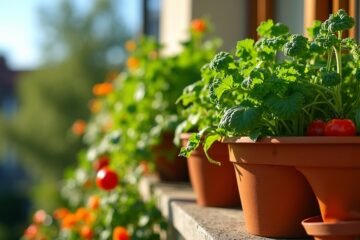Ready to transform your small garden into a vibrant paradise? Start by evaluating your soil’s quality—smooth and crumbly is the way to go! Test that pH level; a range of 6 to 7 works wonders for most plants. Don’t forget to add rich compost and organic matter for a nutrient boost—think of it as a delicious feast for your plants! Curious about other tips to keep your soil healthy and happy? There’s so much more to discover!
Assessing Your Soil Quality
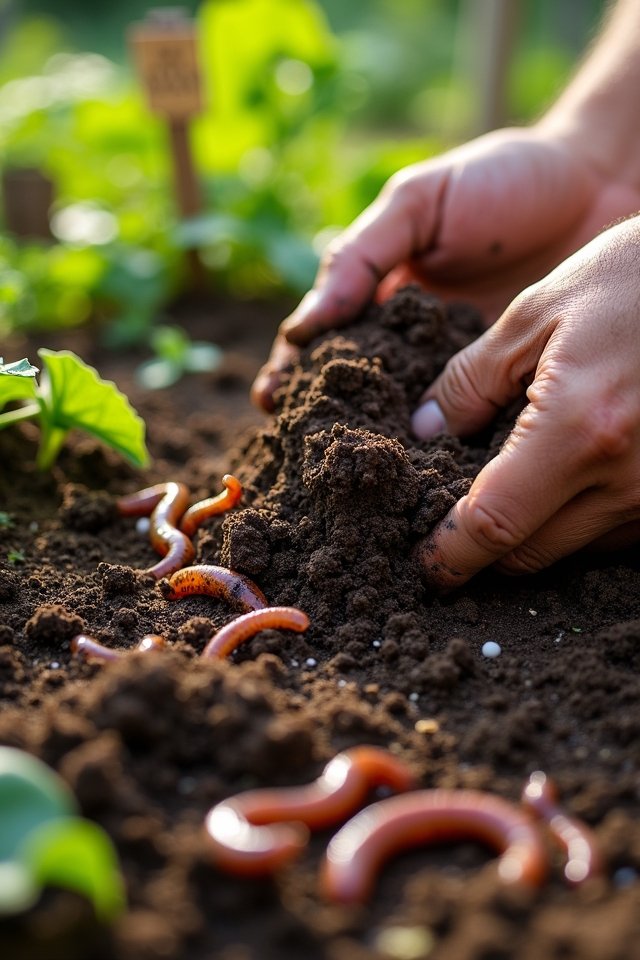
How can you tell if your soil is ready to be the superstar of your small garden? First, dig in! Feel that soil texture—smooth and crumbly means you’re on the right track. Heavy, clay-like dirt? Not so much. Now, look at nutrient composition. Does it smell rich and earthy, or like a science experiment gone wrong? Toss in some compost if it needs a boost! Imagine your plants thriving, reaching for the sun, fueled by a sumptuous feast underground. A handful of nutrient-packed soil can turn your dreams of lush veggies and vibrant flowers into reality! So, grab your trowel, get digging, and let that soil show off its potential—because a happy garden starts beneath your feet!
Testing Soil Ph Levels

You’ve got your soil feeling good, but it might be hiding a secret—its pH level! Think of your soil as a mood ring; its pH can tell you if it’s happy or cranky. Grab a soil testing kit, and let’s reveal this mystery! Most kits make it easy; just mix soil, water, and the magic solution. Follow the directions, and voilà—you’ll see those vibrant colors. A pH around 6 to 7 is sweet for most plants, but if it’s too acidic or alkaline, adjustments are necessary. Don’t ignore the clues your soil gives you! Like a quirky friend, it needs your attention and care. You’re not just a gardener; you’re a soil whisperer! So, let’s dig deep!
Adding Organic Matter
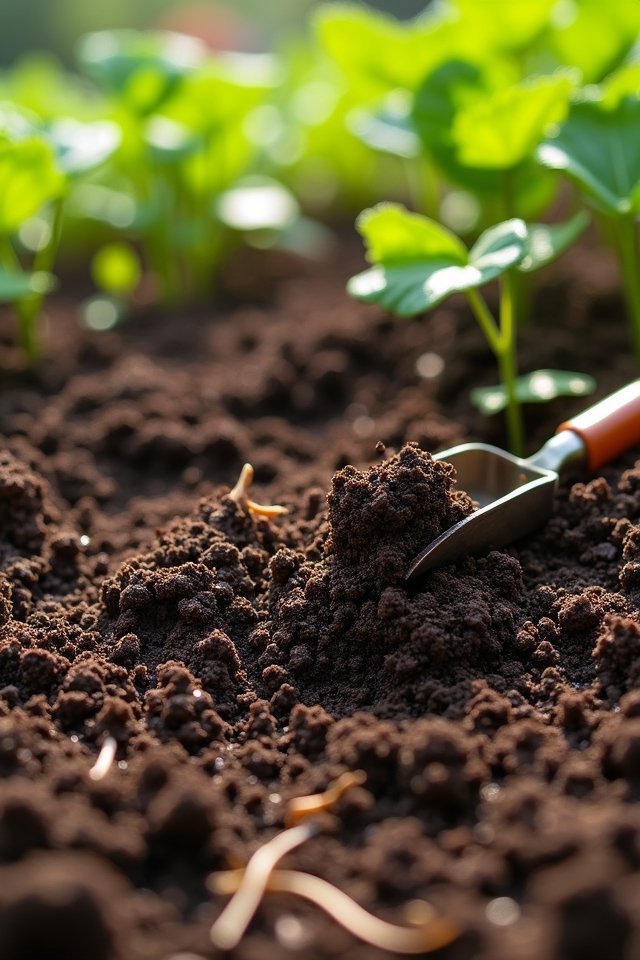
While your soil’s pH level may be sparkling like a perfect summer day, adding organic matter is the icing on the cake! Incorporating compost application not only enriches your garden but also improves soil structure. Consider your compost like a superhero cape for your plants—transformative and powerful! Toss in a layer of organic mulch, and you’ll enjoy mulch benefits like moisture retention and weed suppression. Can you imagine your tiny seedlings, snug and cozy, thriving in this nutrient-rich haven? By adding organic matter, you’re not just improving soil; you’re crafting a vibrant ecosystem! Your plants will thank you with bountiful blooms and delicious veggies. So, roll up those sleeves! Your garden masterpiece awaits, brimming with life and color!
Choosing the Right Soil Amendments
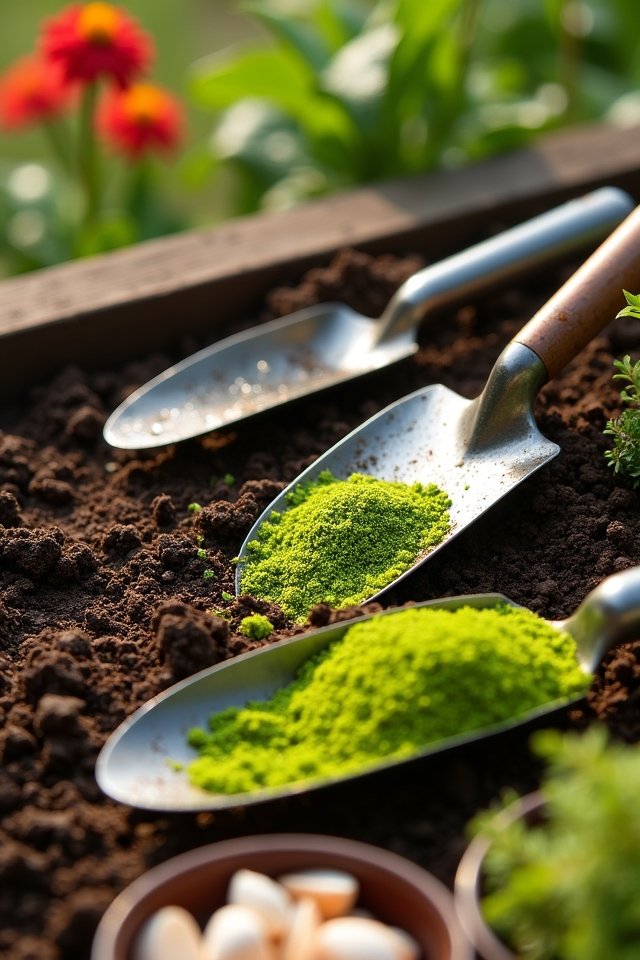
As you immerse yourself in the world of soil amendments, consider this: the right mix can turn your garden into a booming paradise! Different soil types, like sandy or clay, require tailored amendments. For instance, adding compost boosts nutrients, while perlite enhances drainage—your plants will practically sing!
Don’t forget about the wonder of worm castings; they’re nature’s little gold nuggets! Imagine healthy roots sprawling out like kids at recess—exciting, right?
When choosing, think about the amendment benefits: will it improve water retention, or is your goal to promote aeration? Each decision shapes your garden’s future! So, get ready to dig in and transform that soil like a master chef seasoning a gourmet dish. Happy gardening!
Tilling and Aerating the Soil
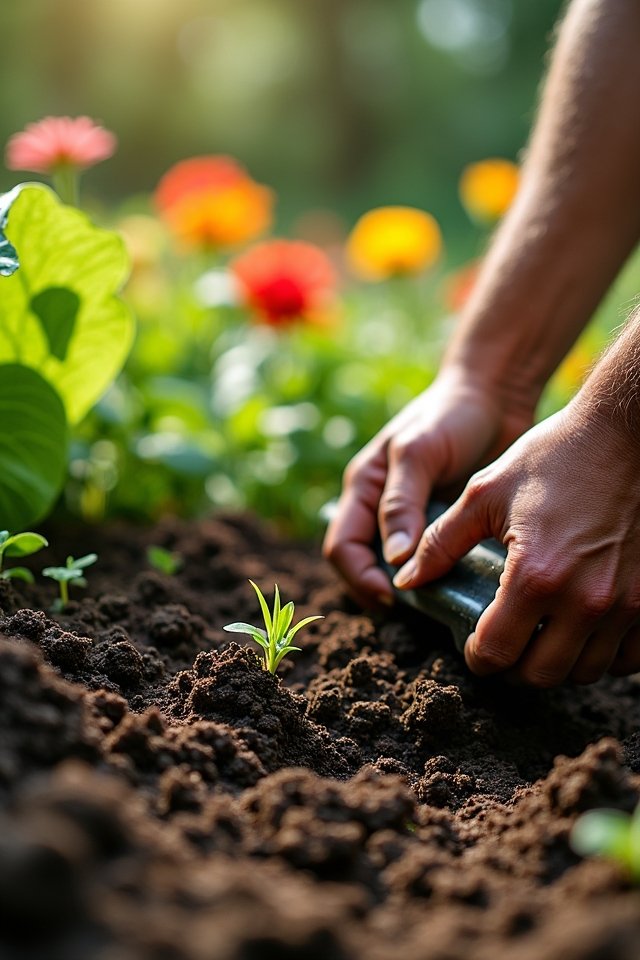
Tilling and aerating the soil is like giving your garden a revitalizing spa day! You’re breaking up compacted earth and enhancing soil texture for healthier plants. You have several innovative tilling methods to choose from, like manual tillers or electric rototillers, each offering unique benefits.
- Experience the joy of improved drainage!
- Watch plants thrive with better nutrient absorption!
- Feel the excitement of richer soil, teaming with life!
- Enjoy the ease of better root penetration!
As you work the soil, envision lush greenery bursting forth from the ground! Your efforts make a difference, creating a thriving ecosystem for plants. So roll up your sleeves, release your inner gardener, and let your garden glow!
Managing Soil Drainage
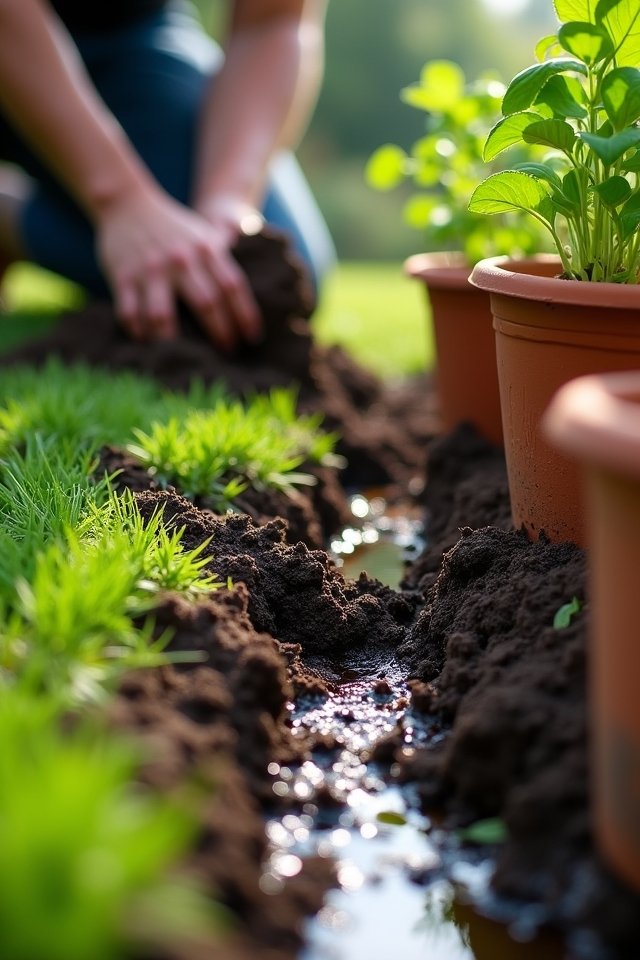
Nothing can sink your gardening hopes faster than poor soil drainage! Imagine your plants sitting in a swamp—yikes, right? To keep your green friends happy, consider innovative drainage solutions that meet their needs. Try creating raised garden beds to encourage excess water to flow away. Adding organic matter—like compost—can improve soil texture, promoting the perfect balance of soil moisture. Also, dig holes filled with gravel, acting as tiny reservoirs to prevent water buildup. A simple drainage tile can transform a muddy patch into a flourishing oasis! Remember, your plants thrive on proper drainage. So let’s keep their roots dancing, not drowning! With these tips, you’ll be on the path to cultivating a vibrant garden full of life and joy!
Implementing Crop Rotation
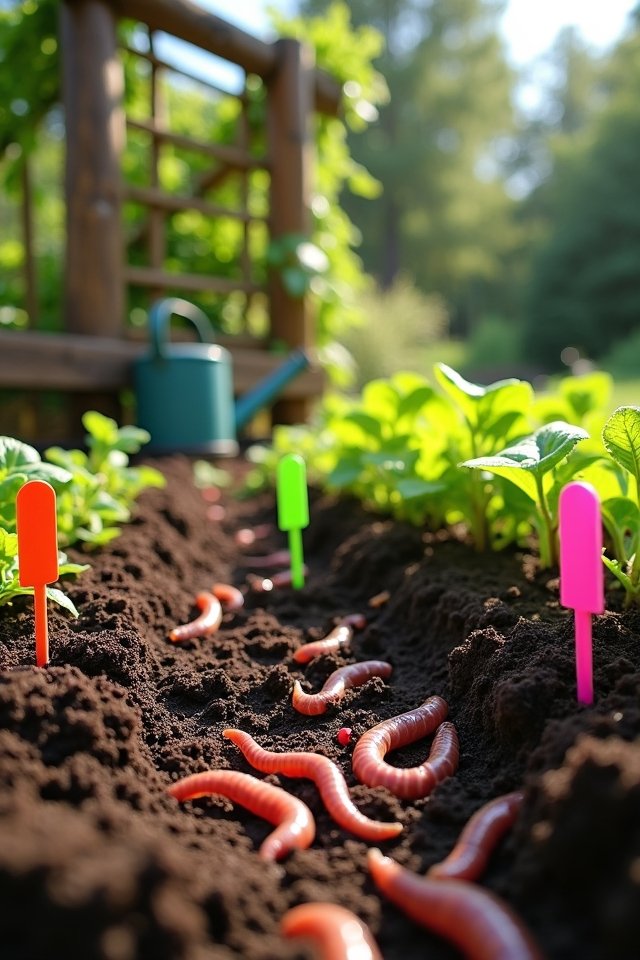
If you want to boost your garden’s productivity and keep pesky pests guessing, crop rotation is the way to go! By mixing things up, you enhance crop diversity and encourage healthier soil. Plus, it’s like a surprise party for your garden each season!
Here’s what crop rotation can do for you:
- Rejuvenates nutrients — different plants need different nutrients, improving soil richness.
- Reduces pests and diseases — change the landscape, and pests won’t know where to find their favorite snacks!
- Enhances yields — healthy, varied crops mean more food on your plate.
- Encourages biodiversity — a lovely, lively ecosystem flourishes when you practice seasonal planning.
Maintaining Soil Health Throughout the Growing Season
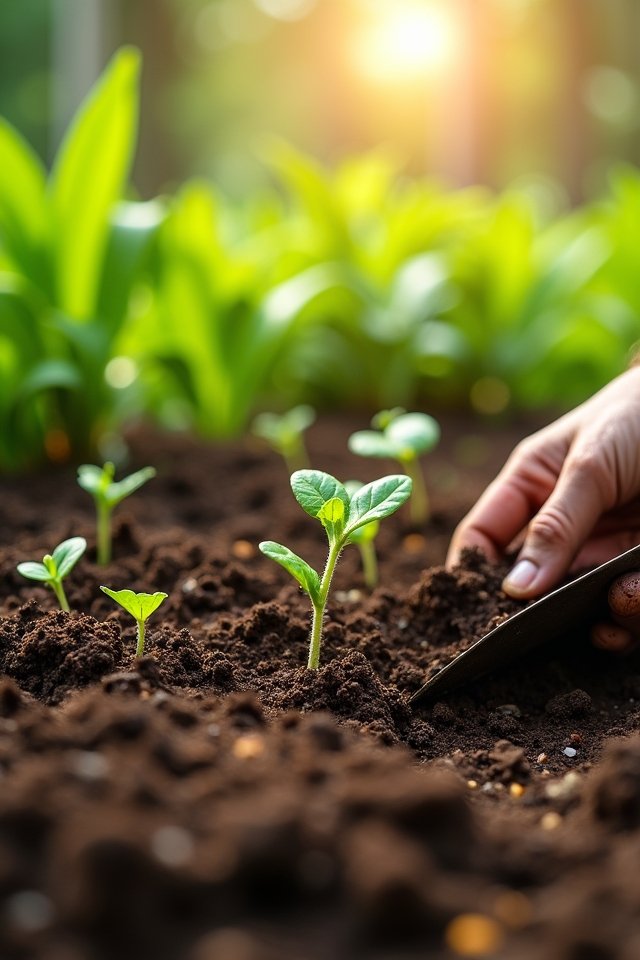
As you journey through the growing season, keeping your soil happy is like throwing a garden party that never ends! First, give a shout-out to soil microorganisms—they’re the tiny heroes that boost nutrient uptake and help your plants thrive. To keep the energy alive, welcome seasonal mulching! Use straw or wood chips as your garden’s dance floor, retaining moisture while smothering pesky weeds. Just think of it as a cozy blanket for your soil! Every few weeks, check your mulch levels; a bit of replenishing can make all the difference. And don’t forget to add organic matter like compost—it’s your garden’s secret sauce. So, let’s keep that soil buzzing with life and creativity all season long!
Frequently Asked Questions
How Can I Tell if My Soil Is Too Compacted?
You can tell if your soil’s too compacted by observing its texture—if it feels like a brick wall, you’ve got a problem! Check for drainage issues: during rain, does water pool like a suspicious puddle? Grab a trowel and dig a bit; if you struggle to penetrate the earth, it’s a sign your soil’s tightly packed. Think of it like squeezing a sponge—there’s just no room for air or nutrients! Let’s loosen things up!
What Tools Do I Need for Soil Preparation?
You wouldn’t believe how easy it is to prep your soil with the right garden tools! Start with a soil testing kit to uncover secrets about your dirt. Then grab a spade to loosen that stubborn earth, a rake to smooth things out, and a trowel for those delicate spots. Perhaps a wheelbarrow will help haul away debris! Trust me, the right tools make your gardening journey exciting and fruitful! Let’s dig deep!
Can I Prepare Soil in Winter for Spring Planting?
Absolutely, you can prepare your soil in winter for spring planting! Think of it as a cozy spa day for your garden. Mix in soil amendments like compost or well-rotted manure to nourish those sleepy nutrients. While the frosty air makes you sip hot cocoa, your soil’s working hard underneath! Just remember to keep it covered with mulch to protect it. Who knew winter gardening could be so nurturing? Your future plants will thank you!
How Often Should I Test My Soil?
Ever wondered if your soil’s secretly plotting against your plants? Testing your soil’s pH and nutrient levels every 1 to 3 years keeps those sneaky elements in check! You wouldn’t wear a jacket that doesn’t fit, right? Similarly, understanding your soil guarantees your veggies thrive! A simple home test kit or sending samples to a lab can work wonders. Stay on top of it, and watch your garden flourish like never before!
What Are Signs of Soil Erosion in My Garden?
You’ll know your garden’s in trouble when you spot bare patches or slumping soil—it’s like your garden’s shedding a few tears! Rills or grooves forming in your soil? That’s erosion waving a red flag! For soil health, keep an eye out for exposed roots and uneven surfaces. Erosion prevention is key—think mulch and cover crops! They’re your garden’s superheroes, blocking the villainous winds and rains that threaten its beauty! What will you do today?
